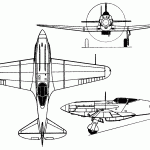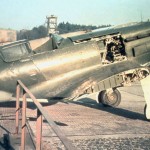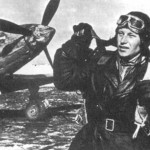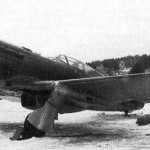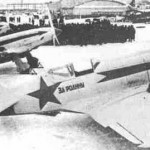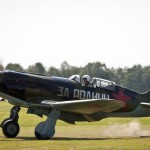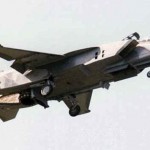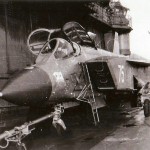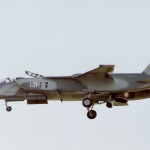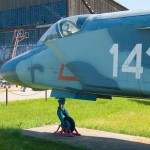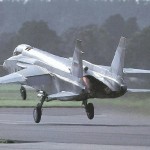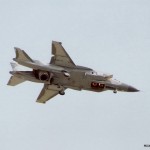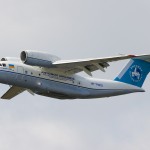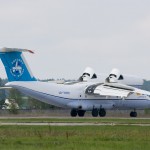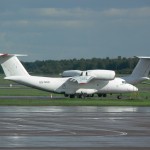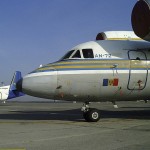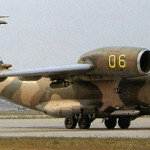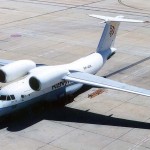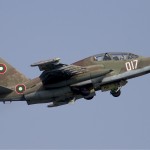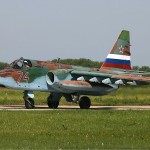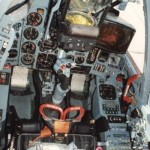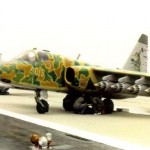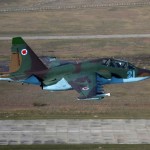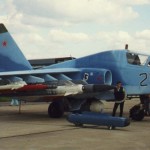
They only needed one, and it was enough to bring about the worldwide end of airborne and surface nuclear bomb testing.
Tsar Bomba, the Soviet Union’s AN602 hydrogen bomb, was and remains the most powerful nuclear weapon ever made and its test was and remains the most powerful man-made explosion in world history.
At the 1960 United Nations General Assembly, Nikita Khrushchev promised to show the United States a “Kuz’kina Mat” — which sort of translates to “we’ll show you!” in Russian. Khrushchev showed the world in 1961 when the only Tsar Bomba ever built was dropped by a Tu-95 “Bear” bomber flown by Major Andrei Durnovtsev over the Mityushikha Bay nuclear testing range in the Arctic, over the Novaya Zemlya archipelago.
Here are some numbers: The bomb weighed 27 metric tons. It was 26 feet long and 6.6 feet around. It was so big that the Tu-95V that dropped it had to have its bomb bar doors and body fuel tanks removed to accommodate it. It was attached to a parachute that, itself, weighed over 12,000 lbs. This gave the “Bear” and observing Tu-16 plane time to fly about 30 miles away before the detonation, which was still so strong that it made the massive Tu-95 drop more than half a mile in altitude due to the shock wave caused by the bomb.
The bomb detonated at 11:32 Moscow time on October 30, 1961 and created a fireball that rose up for miles and could be seen from more than 600 miles away. The mushroom cloud that resulted rose 57 miles up, which is seven times higher than Mount Everest — it’s also in the mesosphere, above the earth’s stratosphere.
The bomb was capable of a mind-boggling 100 megatons of yield, but the Soviet testers deliberately scaled this back to 57 megatons for the test. Still, at 50 mt., the bomb was the biggest ever detonated and expelled 1,400 times power of the bombs dropped on Hiroshima and Nagasaki combined, and yielded TEN TIMES the firepower of all of the ordinance expended throughout World War II.
When the bomb exploded, it leveled the surface of the testing range and melted the rocks on the ground. Thirty-four miles away, every building in the test range village of Severny was destroyed. Wooden structures 100 miles away were flattened. Radio communications were blocked for over an hour. Windows cracked 560 miles away.
The shock wave was so powerful that it circled the earth at least three times, according to measurements published in the journal Nature in February 1962. The shock wave was also so powerful that it prevented the bomb’s fireball from ever touching the ground, bouncing it up like a basketball.
All that, and we are told that there was very little nuclear fallout released by the bomb. Soviet leadership wisely decided to swap out fast-reacting uranium tampers with lead stoppers. This cut the 100 megaton yield down to 57 (Russia says 50, most experts agree that it was 50-60) but just as importantly removed 97 percent of the nuclear fallout from the bomb’s detonation.
The bomb also expelled a lot of its energy into space. This effectively limits the practical use of a weapon of this magnitude. Sure, a 50 megaton bomb will level a city, but so will a 1 megaton bomb. The bulky Tsar Bomba was merely a dangerous piece of agitprop for the Soviet Union.
Still, there was fallout from Tsar Bomba, and the many other nuclear tests conducted at Novaya Zemlya. Experts estimate the combined yield to be 273 megatons detonated there by the Soviets, and fallout is believed to have affected Russia, Alaska, Canada, and Norway. To this day, and for many years to come, plutonium isotopes will continue to pollute the Arctic seas thanks to nuclear testing, according to The Comprehensive Nuclear-Test-Ban Treaty Organization.
A few years after the test, in 1963, the US, UK and USSR signed the Partial Test Ban Treaty forcing all nuclear tests to be conducted underground.
Essential Reading
Online Resources






